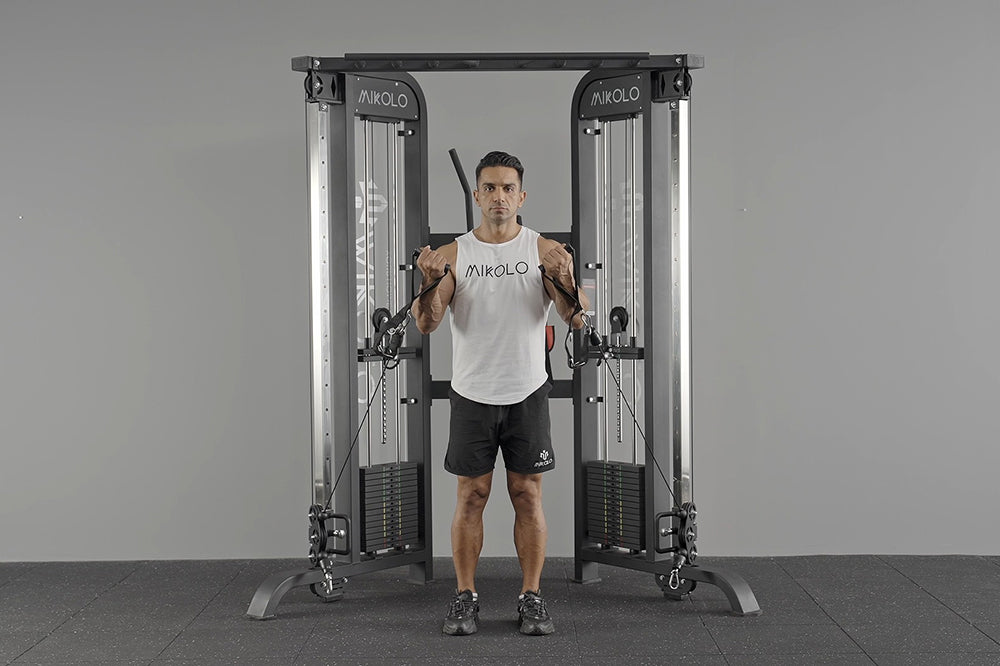The barbell hack squat is an underrated gem in the world of leg training. Though it may look unconventional—lifting the barbell from behind the body—it delivers serious results for your quads, glutes, and hamstrings when performed correctly. This guide breaks down how to perform the barbell hack squat with proper form, how it compares to front squats, and why the “behind-the-back squat” deserves a place in your lower body routine.
What Is the Barbell Hack Squat?
The barbell hack squat is a compound movement where you lift the barbell from behind your legs in a deadlift-style motion. Often referred to as a "behind-the-back deadlift" or “behind-the-back squat,” this exercise primarily targets the quadriceps but also involves the hamstrings, glutes, and spinal erectors.
Unlike the machine-based hack squat, this free-weight variation demands more balance, coordination, and muscle engagement—making it both humbling and effective.
How to Barbell Hack Squat: Step-by-Step Form Guide
-
Set Up:
Place a barbell on the floor behind you. Stand with your feet shoulder-width apart, heels a few inches in front of the bar. -
Grip the Bar:
Squat down by pushing your hips back and bending your knees. Reach behind you to grab the bar with an overhand or mixed grip. Keep your chest up and spine neutral. -
Engage Your Core:
Before lifting, take a deep breath, brace your core, and pack your lats (pull your shoulder blades down and back). -
Drive Through the Heels:
Push through your heels as you extend your hips and knees to stand upright. Keep the bar as close to your legs as possible—ideally skimming your hamstrings on the way up. -
Control the Descent:
Lower the bar with control by hinging at the hips and bending the knees, maintaining a neutral spine throughout.
Common Mistakes to Avoid
-
Letting the bar drift too far from the body: This increases strain on your lower back and reduces quad activation.
-
Rounded back: A neutral spine is critical. Avoid slouching at the bottom of the lift.
-
Rising hips too early: This turns it into more of a stiff-legged deadlift. Keep the lift fluid by extending hips and knees together.
Barbell Hack Squat vs. Front Squat
| Aspect | Barbell Hack Squat | Front Squat |
|---|---|---|
| Bar Position | Behind the legs | Across the front shoulders |
| Quad Focus | High | Very high |
| Core Engagement | Moderate | High |
| Spinal Load | Lower compared to back squat | Moderate to high |
| Learning Curve | Easier to learn | Requires more mobility & practice |
| Equipment Needed | Just a barbell | Barbell + front rack mobility |
The hack squat feels more like a deadlift with quad emphasis, while the front squat demands more upper body control and core strength. For those with limited wrist or shoulder mobility, the barbell hack squat can be a safer alternative.
Why I Keep the Barbell Hack Squat in My Rotation
Years ago, I hit a plateau in my front squat due to lingering wrist issues. That’s when I rediscovered the barbell hack squat. At first, the movement felt awkward—I was chasing the barbell down behind my legs like a circus act. But after a few sessions dialing in form, I noticed a surprising quad burn similar to heavy front squats, minus the strain on my wrists and shoulders.
Now, I cycle hack squats into my programming every 4–6 weeks. They're especially great for volume work after a heavy squat or deadlift day. The unique bar path hits my legs differently, and they’ve helped me build strength and thickness in my quads, especially around the teardrop area (vastus medialis).
Final Thoughts
The barbell hack squat may not be the flashiest movement in the gym, but its benefits are undeniable. Whether you’re looking for a front squat alternative, building leg mass with minimal equipment, or simply shaking up your training, this behind-the-back squat variation is worth a shot.
Focus on clean form, stay consistent, and give your body time to adapt—you might just find this old-school lift becomes a new-school favorite.











































Leave a comment
This site is protected by hCaptcha and the hCaptcha Privacy Policy and Terms of Service apply.